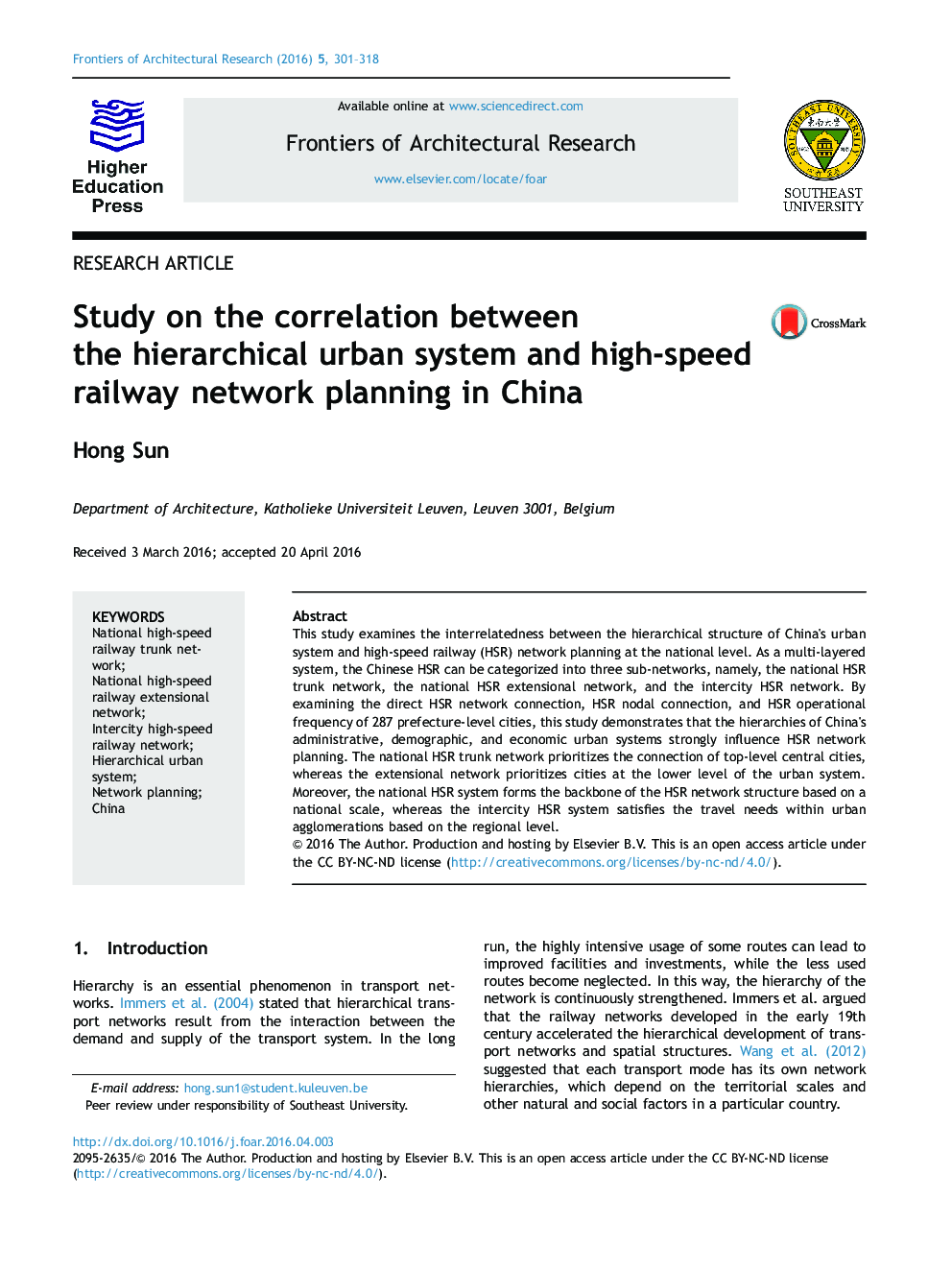| Article ID | Journal | Published Year | Pages | File Type |
|---|---|---|---|---|
| 6742629 | Frontiers of Architectural Research | 2016 | 18 Pages |
Abstract
This study examines the interrelatedness between the hierarchical structure of China׳s urban system and high-speed railway (HSR) network planning at the national level. As a multi-layered system, the Chinese HSR can be categorized into three sub-networks, namely, the national HSR trunk network, the national HSR extensional network, and the intercity HSR network. By examining the direct HSR network connection, HSR nodal connection, and HSR operational frequency of 287 prefecture-level cities, this study demonstrates that the hierarchies of China׳s administrative, demographic, and economic urban systems strongly influence HSR network planning. The national HSR trunk network prioritizes the connection of top-level central cities, whereas the extensional network prioritizes cities at the lower level of the urban system. Moreover, the national HSR system forms the backbone of the HSR network structure based on a national scale, whereas the intercity HSR system satisfies the travel needs within urban agglomerations based on the regional level.
Keywords
Related Topics
Physical Sciences and Engineering
Energy
Renewable Energy, Sustainability and the Environment
Authors
Hong Sun,
